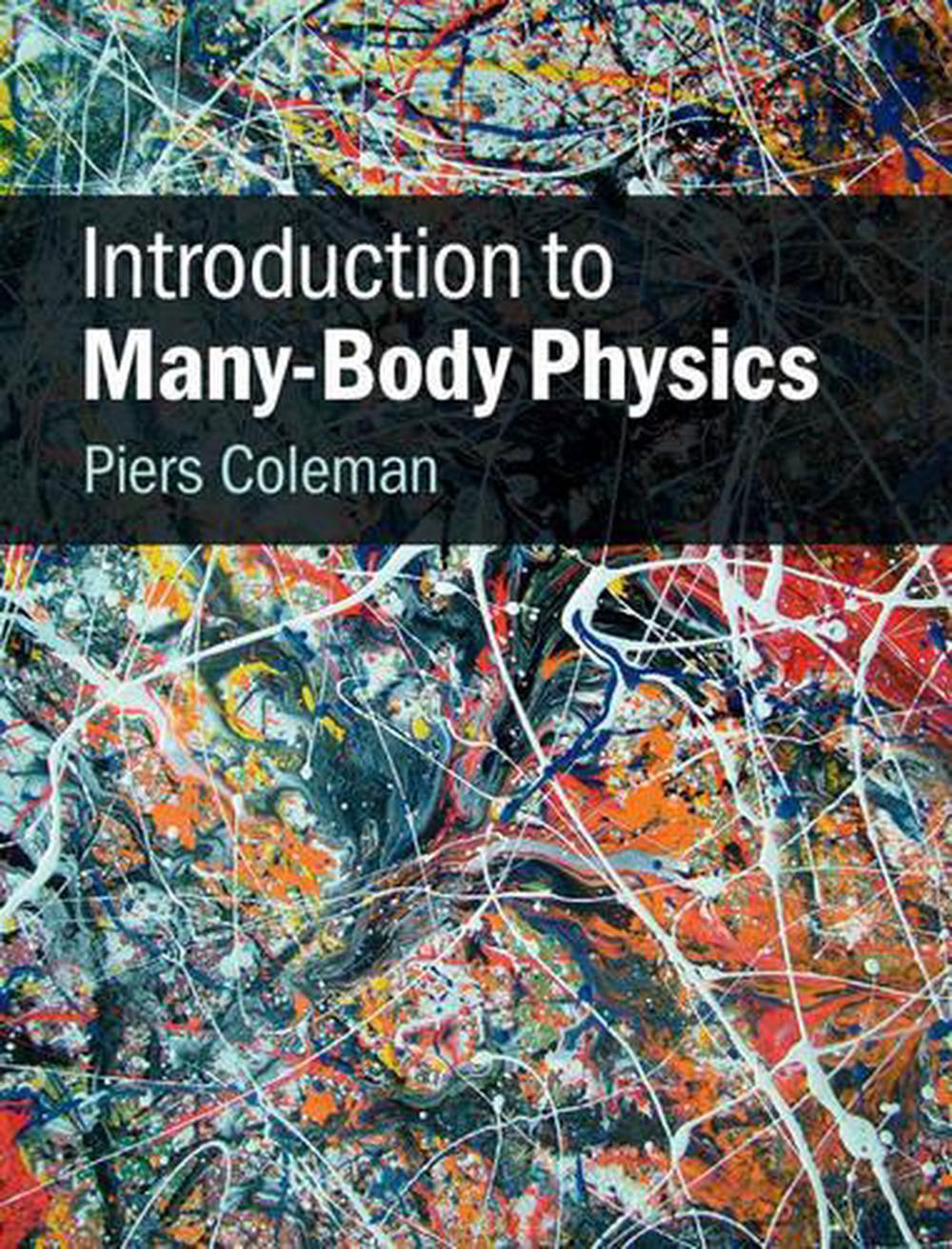
When you click on links to various merchants on this site and make a purchase, this can result in this site earning a commission. Affiliate programs and affiliations include, but are not limited to, the eBay Partner Network.
Introduction to Many-Body Physics by Piers Coleman (English) Hardcover Book

- Item No : 156838226247
- Condition : Brand New
- Brand : No brand Info
- Seller : the_nile
- Current Bid : US $110.80
-
* Item Description
-
The Nile on eBay

Introduction to Many-Body Physics
by Piers Coleman
A modern, graduate-level introduction to many-body physics in condensed matter, this textbook explains the tools and concepts needed for a research-level understanding of the correlated behavior of quantum fluids. With numerous exercises, this an invaluable course book for graduate students in condensed matter physics.
FORMAT
HardcoverLANGUAGE
EnglishCONDITION
Brand New
Publisher Description
A modern, graduate-level introduction to many-body physics in condensed matter, this textbook explains the tools and concepts needed for a research-level understanding of the correlated behavior of quantum fluids. Starting with an operator-based introduction to the quantum field theory of many-body physics, this textbook presents the Feynman diagram approach, Green's functions and finite-temperature many-body physics before developing the path integral approach to interacting systems. Special chapters are devoted to the concepts of Fermi liquid theory, broken symmetry, conduction in disordered systems, superconductivity and the physics of local-moment metals. A strong emphasis on concepts and numerous exercises make this an invaluable course book for graduate students in condensed matter physics. It will also interest students in nuclear, atomic and particle physics.
Author Biography
Piers Coleman is a Professor in the Center for Materials Theory at Rutgers, The State University of New Jersey. A major contributor to the theory of interacting electrons in condensed matter, he invented the 'slave boson' approach to strongly correlated electron systems. He has a long-standing interest in highly correlated d- and f-electron materials, in novel forms of superconductivity and the unsolved problems of quantum criticality in metals.
Table of Contents
Introduction; 1. Scales and complexity; 2. Quantum fields; 3. Conserved particles; 4. Simple examples of second-quantization; 5. Green's functions; 6. Landau Fermi liquid theory; 7. Zero temperature Feynman diagrams; 8. Finite temperature many-body physics; 9. Fluctuation dissipation and linear response theory; 10. Electron transport theory; 11. Phase transitions and broken symmetry; 12. Path integrals; 13. Path integrals and itinerant magnetism; 14. Superconductivity and BCS theory; 15. Retardation and anisotrophic pairing; 16. Local moments and the Kondo effect; 17. Heavy electrons; 18. Mixed valence, fluctuations and topology; 19. Epilogue: the challenge of the future; Index.
Review
'… the field has advanced tremendously since the 1960s. Subsequent decades saw great progress in addressing new many-body systems - such as those exhibiting the Kondo effect, disordered systems, superfluid helium-3, and unconventional superconductors - and the development of new tools, such as functional integrals and the renormalization group. Students and instructors of quantum many-body physics need an updated, modern textbook that covers those developments. [This book] successfully fills the need. Coleman, an eminent condensed-matter theorist at Rutgers University, covers his subject with pedagogical flair and attention to detail … A reader who has mastered the material in this excellent book should be in a strong position to take on problems that have resisted conventional solutions.' Mohit Randeria, Physics Today
Promotional
This book explains the tools and concepts needed for a research-level understanding of the subject, for graduate students in condensed matter physics.
Review Quote
'... the field has advanced tremendously since the 1960s. Subsequent decades saw great progress in addressing new many-body systems - such as those exhibiting the Kondo effect, disordered systems, superfluid helium-3, and unconventional superconductors - and the development of new tools, such as functional integrals and the renormalization group. Students and instructors of quantum many-body physics need an updated, modern textbook that covers those developments. [This book] successfully fills the need. Coleman, an eminent condensed-matter theorist at Rutgers University, covers his subject with pedagogical flair and attention to detail ... A reader who has mastered the material in this excellent book should be in a strong position to take on problems that have resisted conventional solutions.' Mohit Randeria, Physics Today
Promotional "Headline"
This book explains the tools and concepts needed for a research-level understanding of the subject, for graduate students in condensed matter physics.
Description for Bookstore
A modern, graduate-level introduction to many-body physics in condensed matter, this textbook explains the tools and concepts needed for a research-level understanding of the correlated behavior of quantum fluids. With numerous exercises, this an invaluable course book for graduate students in condensed matter physics.
Description for Library
A modern, graduate-level introduction to many-body physics in condensed matter, this textbook explains the tools and concepts needed for a research-level understanding of the correlated behavior of quantum fluids. With numerous exercises, this an invaluable course book for graduate students in condensed matter physics.
Details
ISBN0521864887Author Piers ColemanPublisher Cambridge University PressLanguage EnglishISBN-10 0521864887ISBN-13 9780521864886Media BookFormat HardcoverImprint Cambridge University PressPlace of Publication CambridgeCountry of Publication United KingdomPages 810Short Title INTRO TO MANY BODY PHYSICSYear 2015Publication Date 2015-11-26Affiliation Rutgers University, New JerseyUK Release Date 2015-11-26AU Release Date 2015-11-26NZ Release Date 2015-11-26Illustrations Worked examples or Exercises; 10 Tables, black and white; 229 Halftones, color; 161 Line drawings, black and whiteAlternative 9781139020916DEWEY 530.144Audience Postgraduate, Research & Scholarly


-
- The Lost Super Foods
- $ 37.00
- The Self-Sufficient Backyard
- $ 37.00
- A Navy Seals BUG IN GUIDE
- $ 39.00
- Childrens Books Phonics Lot 60
- $ 34.99
















